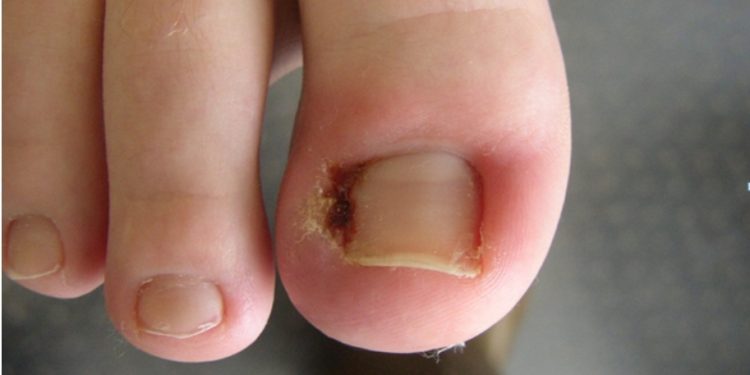Ingrown toenail is a fairly usual but very painful disease that happens when the edges of the toenail nail grow into the surrounding skin. It is possible to be ignorant of this problem because it is perceived as a minor trouble. However, the condition can cause much discomfort to the people and if not treated in time, may lead to many complications. Read below to learn why the ingrown toenails can happen, get to know the symptoms, and explore the possible treatment methods!
Causes of Ingrown Toenail
Following are the common causes of ingrown toenail:
- Genetics: A problem, like an ingrown toenail, can be passed down to some people, and this will make them more likely to develop this problem.
- Improper Nail Trimming: This may prompt the nail to grow into the surrounding skin. This is why it’s important to leave an adequate amount of nail length while cutting. Cut your nails straight rather than round to prevent ingrown toenails.
- Tight-Fitting Shoes: Having shoes that make the toes feel cramped could place pressure onto the toenails, of which can cause ingrown toenail.
- Injury to the Toe: Stubbing the toe or dropping something heavy will also deter the growth of the toe nail in such a manner that it becomes a factor in the formation of ingrowing toenails.
Symptoms of Ingrown Toenail
The most common symptoms of an ingrown toenail include
- Pain and Tenderness: The affected toe or toe tip can be painfully sensitive to touch that you feel discomfort even when you wear shoes or when you bump this toe against a footstep.
- Swelling: The ingrown toenail may appear to be swollen and painful
- Redness: Surrounding the ingrown toenail there can easily be redness and inflammation.
- Infection: In some cases when bacteria infiltrate the region, the infection can begin that is characterized by drainage of pus with more pain.
If these are the signs that you can relate to, you should consider booking an appointment with a Dermatologist in Karachi to get the cure.
Treatment Options for Ingrown Toenail
Treatment for ingrown toenails depends on the severity of the condition:Treatment for ingrown toenails depends on the severity of the condition:
- Conservative Measures: In situation of an ingrown toenail that is not severe, the condition can be managed with non-surgical ways and home remedies such as warm water soaking, gently lifting the nail and applying medicated ointment.
- Surgical Intervention: For extremely severe conditions or recurring ingrown toenails, surgical procedures like partial nail removal or nail matrixectomy entail permanent nail root destruction to prevent subsequent recurrence.
Prevention of Ingrown Toenail
Taking proactive steps to prevent ingrown toenails can help maintain foot health:Taking proactive steps to prevent ingrown toenails can help maintain foot health:
- Proper Nail Trimming: Use a nail clipper to trim toenails straight across and avoid cutting them too short which is one of the major cause for ingrown toenails.
- Wearing Comfortable Shoes: Instead of choosing shoes that are pulled up on the toes or ones that are too tight according to the size, try to pick the ones that have enough room for the toes.
- Good Foot Hygiene: Let your feet always be dry and clean. Also do not share now your nail clippers and other personal care material to stop contagion.
Conclusion
By having ingrown toenails you may end up with pain and discomfort, but by having standard practice in treatment and care, you can put them under control and prevent development of this condition. In case you need to treat ingrown toenail, it is essential that you consult a dermatologist in Lahore straight away.


 Home
Home










